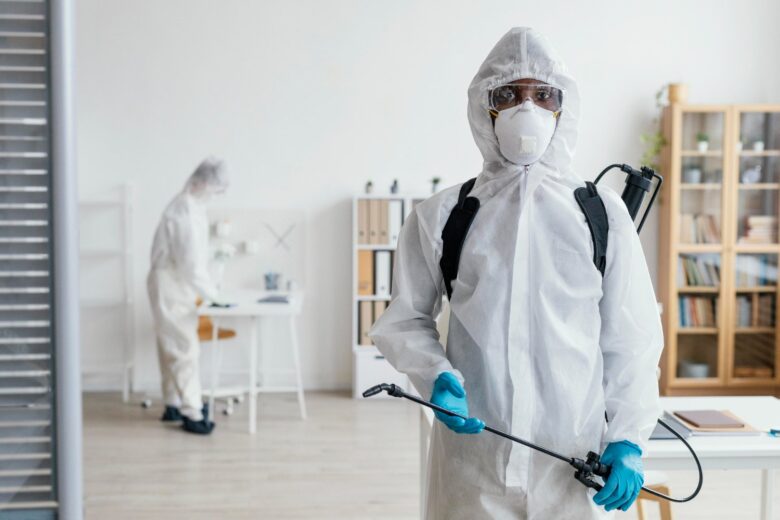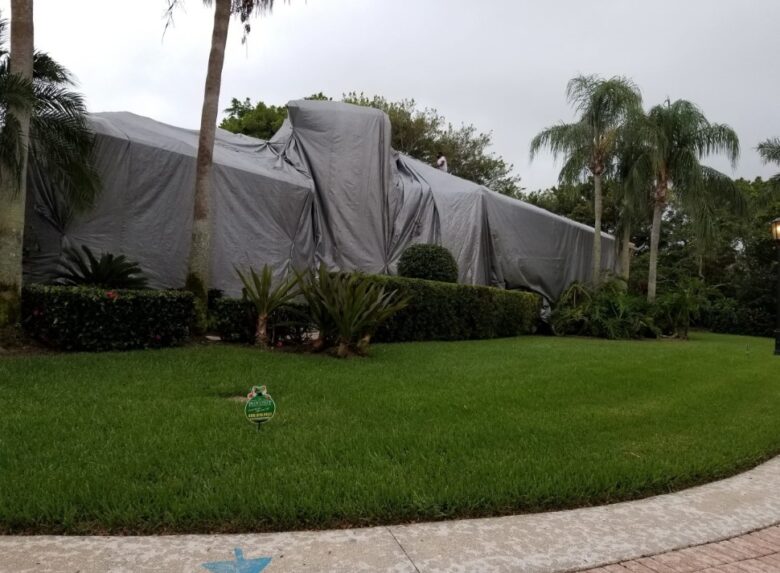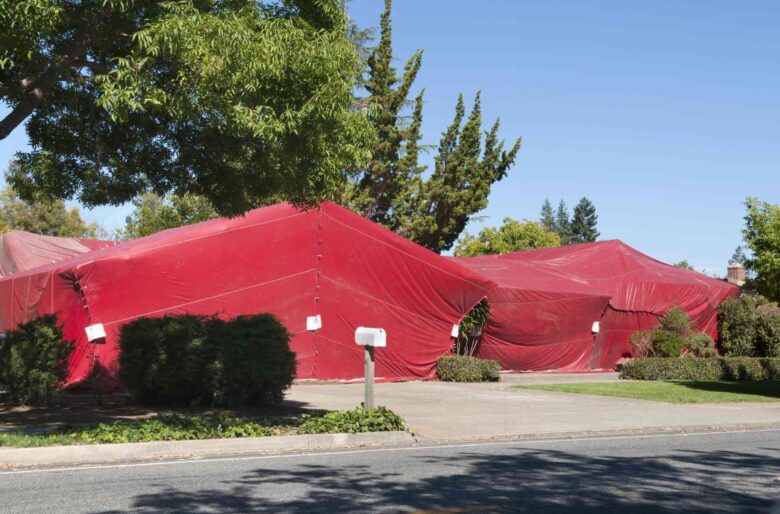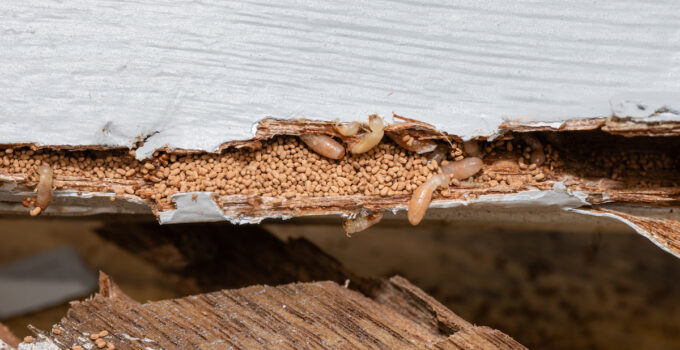Addressing termite infestations promptly is crucial for maintaining the integrity of your home.
Termite tenting, a comprehensive solution, effectively eliminates these pests and safeguards your property.
Termite Infestations
Termite infestations pose significant threats to homes, often going unnoticed until severe damage occurs. There are three primary types of termites: Drywood, Dampwood, and Subterranean.
Each type has unique characteristics and preferences, but all can cause extensive damage to wooden structures.
Drywood termites live in dry wood and are often found in attics or wooden furniture. They do not require contact with soil and can cause significant damage by hollowing out wood from the inside.
Dampwood termites, as their name suggests, prefer moist wood and are typically found in areas with high humidity or water damage.
Subterranean termites are the most destructive, forming large colonies underground and creating mud tubes to access food sources above ground.
Signs of a termite infestation include discarded wings, frass (termite droppings), and hollow-sounding wood. You might also notice blistering wood or mud tubes along your foundation. Recognizing these signs early can help in taking prompt action, such as termite tenting, to prevent extensive damage and costly repairs.

Source: hitechtermite.com
When is Termite Tenting Necessary?
Termite tenting becomes necessary in situations where spot treatments are insufficient. Spot treatments involve localized insecticide application and are effective for small, contained infestations. However, extensive infestations or those in inaccessible areas require a more comprehensive approach.
Whole-house fumigation, or termite tenting, is often recommended when termites are widespread or have infiltrated hard-to-reach areas. This method ensures that all termites, including those hidden deep within the structure, are eradicated.
Tenting involves sealing the entire house and releasing a gaseous insecticide that penetrates wood and other materials, reaching termites where spot treatments cannot.
Situations requiring fumigation include severe infestations where termites have spread throughout the house or when multiple colonies are present. It is also necessary when termites have infiltrated structural beams or areas behind walls that are difficult to access with traditional treatments.
Consulting a professional pest control service can help determine the extent of the infestation and whether termite tenting is the best solution.

Source: mothernaturesinc.com
The Fumigation Process
The termite tenting process begins with an initial inspection and assessment by a pest control professional. This inspection identifies the extent of the infestation and the areas that need treatment. Once the assessment is complete, preparation steps are necessary to ensure the safety and effectiveness of the fumigation.
Homeowners must remove food, clothing, and medications to prevent contamination. These items should be sealed in special bags or taken off-site. The home must also be secured by turning off gas lines, electricity, and water. Doors and windows are then locked to prevent unauthorized access during the fumigation process.
The tenting procedure involves enclosing the entire home with a tent-like structure. This tent seals the house and prevents the escape of gaseous insecticides. Once the tent is in place, a gaseous insecticide is released, penetrating all areas of the home, including wood and other materials. The fumigation process typically lasts 24 to 48 hours, depending on the severity of the infestation and the size of the home.
Safety measures during fumigation include evacuation of all residents and pets. The home must be vacated during the entire process and for a specified period afterward to allow the gas to dissipate. Professional pest control companies follow strict guidelines and regulations to ensure the safety of residents and the effectiveness of the treatment.

Source: palmcoastpestcontrol.com
Safety Concerns and Precautions
Safety during termite tenting is paramount to ensure the well-being of both the occupants and the environment. Ensuring safety during fumigation involves several critical steps. The first and foremost is the complete evacuation of all residents, pets, and even plants from the property. The fumigation process uses potent gaseous insecticides, which can be harmful to living beings if inhaled.
Once the home is vacated, it is essential to secure the property to prevent unauthorized access. Pest control professionals seal the house thoroughly to contain the gas within. The duration of the fumigation process typically ranges from 24 to 48 hours, depending on the severity of the infestation and the size of the property.
After the fumigation is complete, the home needs to be aired out properly. This involves ventilating the house to allow the gas to dissipate completely. Professional pest control companies follow stringent guidelines to ensure that the home is safe for re-entry. They use specialized equipment to measure gas levels and ensure that it is safe for occupants to return.
Compliance with local regulations and guidelines is crucial during the termite tenting process. Professional pest control companies are well-versed in these regulations and ensure that all safety measures are followed meticulously. Homeowners should also follow the advice and instructions provided by the pest control professionals to ensure their safety and the effectiveness of the fumigation process.

Source: thespruce.com
Effectiveness of Termite Tenting
Termite tenting is highly effective in eradicating termite infestations. The process works by releasing a gaseous insecticide that penetrates wood and other materials, reaching termites deep within the structure. This method ensures that all termites, including those hidden in inaccessible areas, are eliminated.
The success rates of termite tenting are high, with immediate eradication of termites being a common outcome. The gaseous insecticide used in fumigation penetrates deeply into the wood and other materials, ensuring that even the most hidden termites are reached and exterminated. However, it is essential to note that while termite tenting is effective at eliminating existing infestations, it does not provide long-term prevention against reinfestation.
The limitations of termite tenting include the lack of residual protection. Once the fumigation process is complete and the gas has dissipated, the home is no longer protected from future termite infestations. Homeowners must take proactive measures, such as regular inspections and preventive treatments, to ensure that termites do not return.
Despite these limitations, termite tenting remains one of the most effective methods for addressing severe and widespread termite infestations. It provides a comprehensive solution that eliminates all termites within the treated area, ensuring the safety and integrity of the home.




